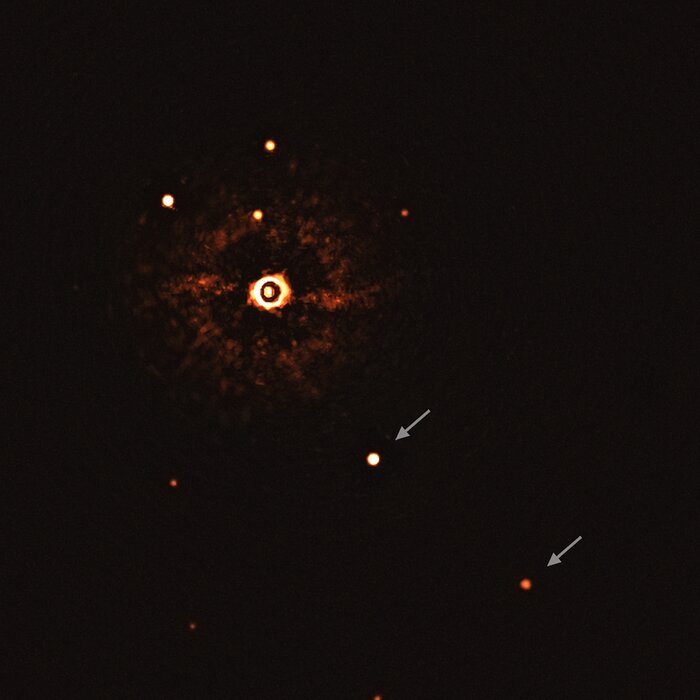
Our abilities to image things improve in two ways: we can build bigger telescopes that are capable of gathering more light and seeing both fainter objects and resolving smaller objects. We can also build better and better cameras that capture light more effectively, and take full advantage of the telescopes they are mounted too.
When a great telescope is combined with a great camera, wildly awesome things are possible. In my humble opinion, there is no better telescope than the European Southern Observatory’s (ESO) Very Large Telescope (VLT), and its Spectro-Polarimetric High-contrast Exoplanet REsearch (SPHERE) instrument is arguably one of the best cameras out there. Working together, this system has captured the first-ever image of multiple exoplanets orbiting a star. This stunning image of TYC 8998-760-1 appears in a new paper in The Astrophysical Journal Letters with lead author Alexander Bohn.
According to Bohm: This discovery is a snapshot of an environment that is very similar to our Solar System, but at a much earlier stage of its evolution.
Co-author Matthew Kenworthy goes on to add: Even though astronomers have indirectly detected thousands of planets in our galaxy, only a tiny fraction of these exoplanets have been directly imaged. Direct observations are important in the search for environments that can support life.
This image captures two gas giants orbiting at about 160 AU and 320 AU. For comparison, our solar system’s Kuiper Belt appears to end at about 55 AU or roughly one-third the distance of the nearer of these two worlds. This isn’t a solar system like our system, but it is amazing that we can image it. According to Bohm: The possibility that future instruments, such as those available on the ELT, will be able to detect even lower-mass planets around this star marks an important milestone in understanding multi-planet systems, with potential implications for the history of our own Solar System.
We can only hope that as our telescopes and technology advance, systems like our solar system will become observable.
More Information
“Two Directly Imaged, Wide-Orbit Giant Planets Around the Young, Solar Analog TYC 8998-760-1,” A. J. Bohn et al., 2020, Astrophysical Journal Letters (Preprint in pdf)




 Join the Crew!
Join the Crew!
 Escape Velocity Space News
Escape Velocity Space News
0 Comments